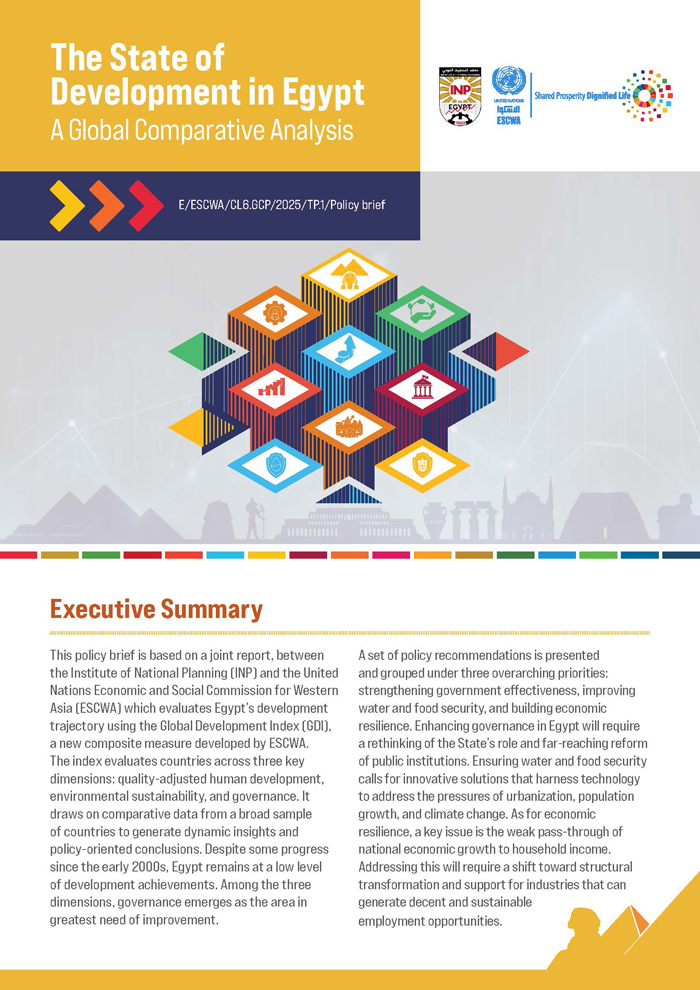
ESCWA Publication: E/ESCWA/CL2.GPID/2025/TP.6
Country: Arab region
Publication Type: Information material
Cluster: Gender Justice, Population and Inclusive Development
Focus Area: Inclusive development
Initiatives: Monitoring money-metric poverty, Addressing multidimensional poverty
SDGs: Goal 1: No Poverty
Keywords: Arab countries, Basic needs, Engel’s law, Family income, Household expenditures, Measurement, Poverty, Standard of living, Statistical data
Demarcation of ESCWA poverty lines: A validation study
May 2025
Global poverty monitoring necessitates comparable poverty assessments across diverse countries and time periods, even when prior poverty data is limited. Constructing consistent poverty lines that account for varying living standards, akin to national approaches, is crucial for this endeavor. Such methodologies enable the projection of poverty in previously unmeasured contexts, providing valuable insights for international development efforts and policy formulation.
This paper validates the Economic and Social Commission for Western Asia (ESCWA)'s quasi-relative poverty lines, which increase at a diminishing rate with a country's average household income per capita. The study demonstrates that these poverty lines possess favorable conceptual and computational characteristics, aligning with Engel's Law regarding the declining share of basic expenditures with increasing consumption. Furthermore, the ESCWA poverty lines are shown to effectively approximate national poverty lines and yield reasonable poverty rates across different country groups, outperforming alternative specifications and previously proposed poverty line methodologies.
Related content
Inclusive development
,
Global poverty monitoring necessitates comparable poverty assessments across diverse countries and time periods, even when prior poverty data is limited. Constructing consistent poverty lines that account for varying living standards, akin to national approaches, is crucial for this endeavor. Such methodologies enable the projection of poverty in previously unmeasured contexts, providing valuable insights for international development efforts and policy formulation.
This paper validates the Economic and Social Commission for Western Asia (ESCWA)'s quasi-relative poverty lines, which increase at a diminishing rate with a country's average household income per capita. The study demonstrates that these poverty lines possess favorable conceptual and computational characteristics, aligning with Engel's Law regarding the declining share of basic expenditures with increasing consumption. Furthermore, the ESCWA poverty lines are shown to effectively approximate national poverty lines and yield reasonable poverty rates across different country groups, outperforming alternative specifications and previously proposed poverty line methodologies.



